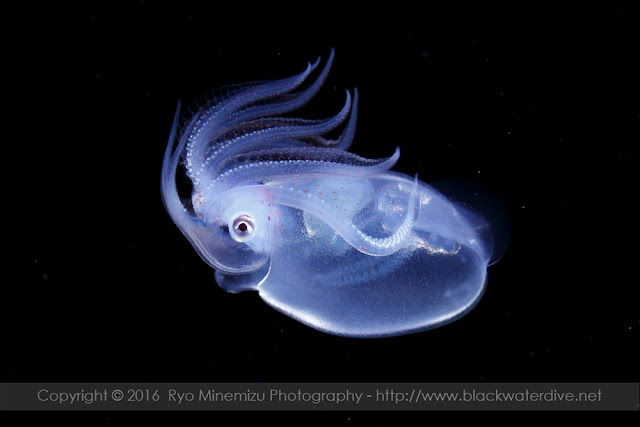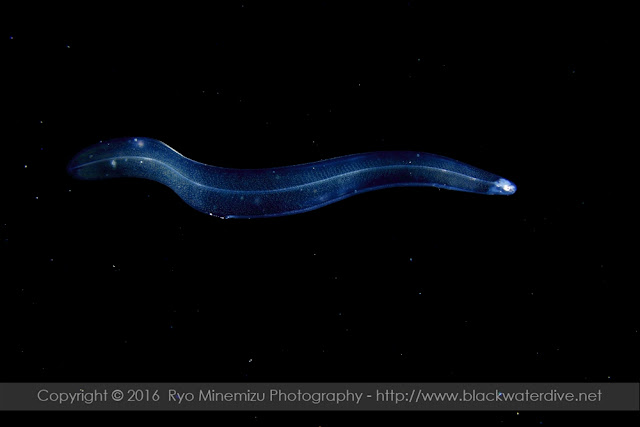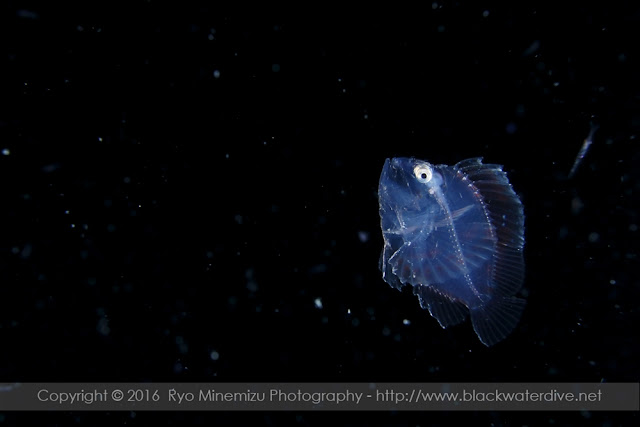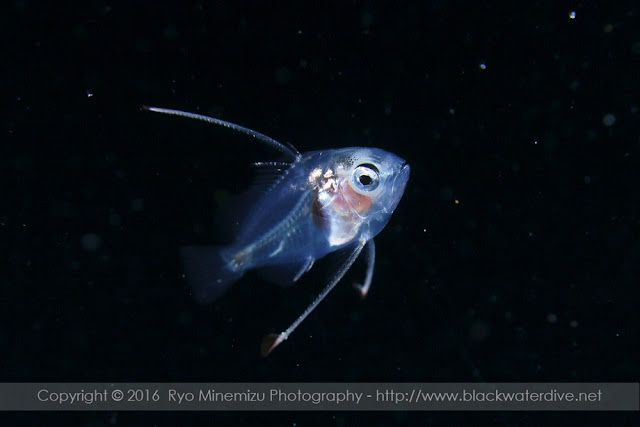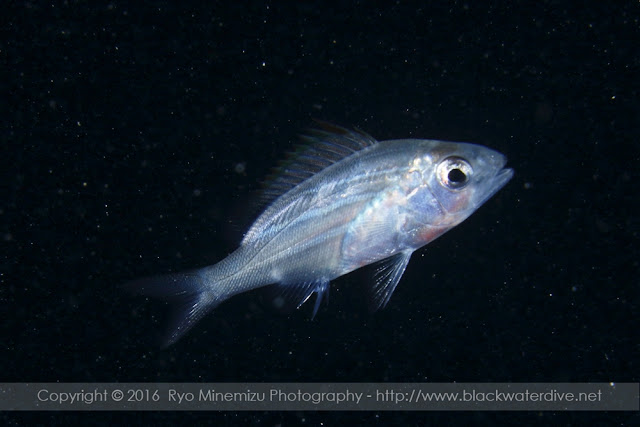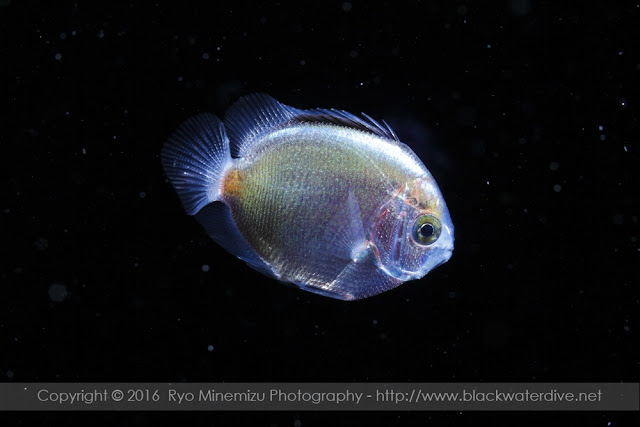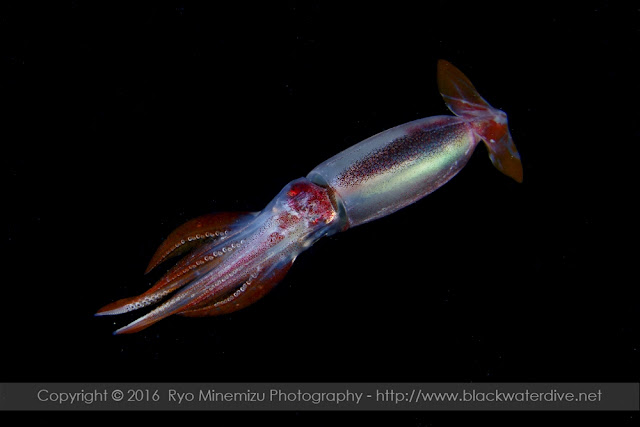This time, I could shooting valuable male ecology of
Tremoctopus gracilis (Eydoux & Souleyet, 1852) at Palau. That is probably of a third case in the world.
Tremoctopus gracilis is a very unique an octopus of open ocean-swimming with web on the arm. The male is very small compared to the female, So far, It's have been most captured in such investigation by the plankton net.
The first discovery is by David Paul of Melbourne University. It was the world's first ecological photographed at Great Barrier Reef, in Australia. after that, first report is by Dr Norman in 2002.
At that time, it has been reported to have the tentacles of cnidarians such as jellyfish. Then, that this species is holding tentacles at selectively Portuguese Man O' War (
Physalia physalis) has also been re-reported at Tree of Life Web Project. So far, how to use of this jellyfish tentacles, it has been considered for the defense or attack.
 |
| Tremoctopus gracilis (Eydoux & Souleyet, 1852) ,male, ML:15mm |
 |
| seems to be tentacles of Physalia physalis on the sucker arm. |
Related report
Larva of Blanket Octopus
http://www.blackwaterdive.net/2016/01/larva-of-blanket-octopustremoctopus.html
REFERENCES:
Sweeney, M.J., Roper, C.F.E., Mangold, K.M., Clarke, M.R., and Boletzky, S. v. 1992. 'Larval' and juvenile cephalopods: a manual for their identification. Smithsonian Contributions to Zoology - No. 513. 282pp.
Norman, M.D. 2000. Cephalopods A World Guide. Frankfurt, Germany, IKAN Publishing. 320 pp.
Jereb,P., Roper,C.F.E.,Norman,M.D.,Julian,K.F., 2014. Cephalopods of the World. An annotated and illustrated catalogue of Cephalopod species known to date Volume 3 Octopods and Vampire Squids. FAO Species Catalogue for Fishery Purposes No.4, Vol.3. 382pp.









